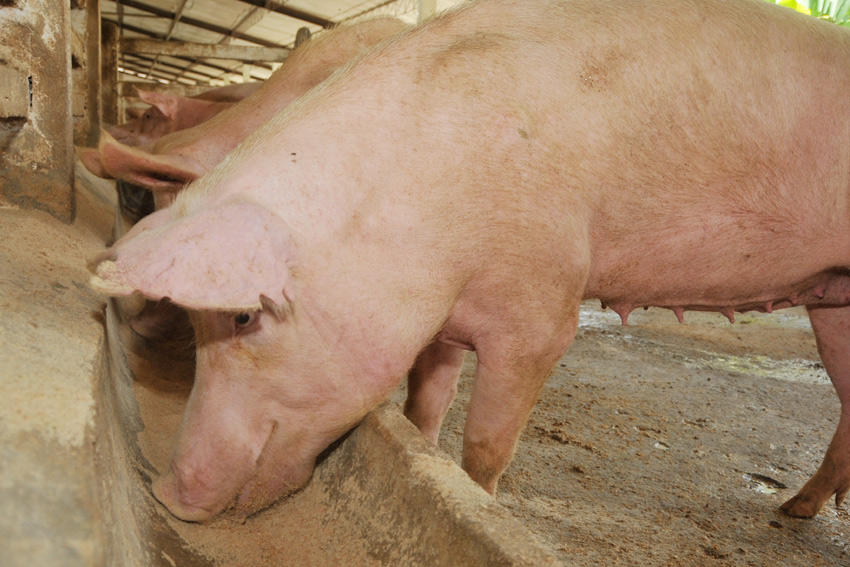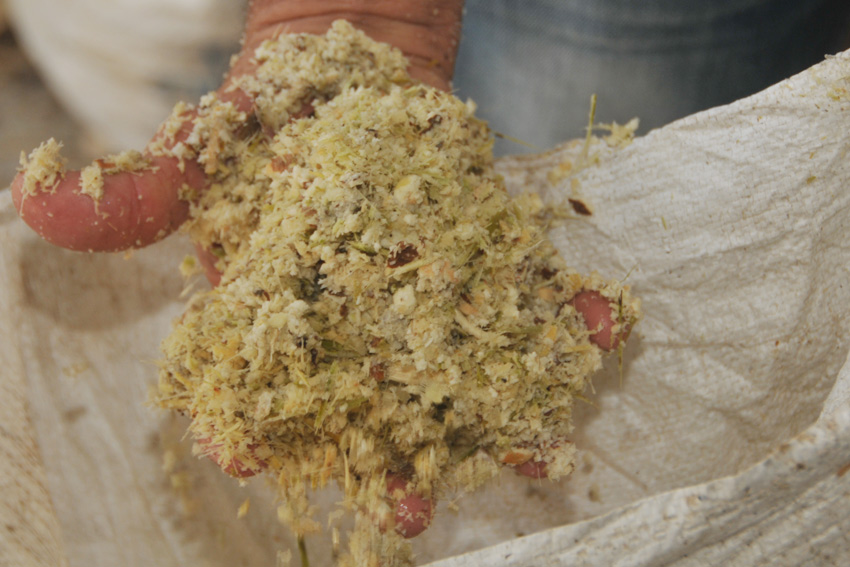
Last year, the Swine Enterprise of the province of Las Tunas closed with a total mass of 5,657 pigs agreed with individual producers and in specialized centers. Of these specimens, 1,460 are breeding females.
Las Tunas, Cuba.- If these data are analyzed with the needs of the farmers, and knowing that prices only go down with more production, it is little. Very little. However, if it is seen for what it is -the end of the decrease in the state sector- it could be understood as a turning point.
Taking the first steps towards recovery is how workers, specialists, and managers of the entity see it, after an eventful stage in which they stopped receiving imported feed and/or raw material, without being prepared with the food demanded by the animals.
Now the panorama is different in terms of the crops that accompany the growth of the pigs. However, it is very different from what can be done to boost pig development and increase meat volumes in a very difficult economic context.
La Herradura basic business unit (UEB), in the municipality of Majibacoa, is a good example for the territory of Las Tunas because the 37 workers understood that with their hands they must harvest corn, soybeans, beans, cassava, sweet potatoes, and other crops.
They are Creole pigs, dark-coated, very strong physically and resistant to the climate," says the director of the entity, Francisco Gómez Ávila, "and the best thing is that they eat whatever they are given. We have more than 42 hectares between pastures and crops.
"In the entity, there are about 1,200 animals; among them, 207 are breeding females, 37 piglets, and 17 boars. Our mission is to sell these reproductive females to non-specialized forms so that the breed increases. We have a plan of 550 for the year, and we hope to fulfill it.”

Something similar is happening in “El Bleo,” in the same territory, where numerous alternatives have been sought to feed the mass. Its director, Ernesto Cruz Pérez, said that this has been the priority during these troubled times and that the strategy worked out well.
"We were able to keep 503 breeders and we want to close the year with 600, but this implies intense work in the sowing of several crops such as sorghum and cassava. We dehydrate this tuber and incorporate 15 percent of it into the feed produced domestically.”
"We also use slaughterhouse waste and by-products from sugar production. We already have 20 percent of the mass in the feedlot and this will increase in May and June. And we continue to champion genetics with animals that are a Yorkland cross."
In general, in 2023, the priority is to recover the physical condition of the mass, and to grow in heads, thus consolidating the work of the Manatí multiplier center. In addition, the goal is to reduce piglets’ mortality, a serious problem at present.
By the way, Idalexis Peña Hechavarría, director of the Swine Company, informed us that the country is buying the starter feeds to save the life of the young, because of how much they represent the growth of the activity, and when they have a prudent size, the other nutrients will be incorporated to them.
"In this calendar, we have the responsibility to produce more pork, which implies increasing agreements with individual producers, increasing sowings, and maintaining linkages with agricultural food-generating entities."
"In addition, we must apply for green medicine as prevention against the deficit of medicines, give more training to the technical force to improve management in each unit, create more agricultural collectives, and increase the production of Creole feed."
In the last few days, in some municipalities of Tunas, pork produced in the state sector or the agreements has been marketed and the acceptance of the people has been great, but the amount sold is still insufficient for the demand for this resource.
For this reason, more solutions must be sought, such as promoting the planting of sugar cane and King Grass, making rational use of all available land, applying science, technology, and innovation, and, especially, paying more attention to the producers.
The battle is almost won because the breeders were preserved and compared to 2018 when imported feed began to be scarce, some crops are available. There are better experiences and a lot of will for the swine recovery to be more than the starting signal.






